What is tamarillo and how to grow it?

Today, many exotic fruits can be found on store shelves, in particular tamarillo. This wanderer outwardly reminds us of our favorite vegetable - tomato, but with a very amazing taste, close to tomato. However, not everyone will like the specific taste. But connoisseurs of a varied diet will appreciate it according to its merits. In addition, the fruits are rich in useful trace elements and vitamins. This "foreigner" is not particularly whimsical to care for, but has its own varietal characteristics in breeding.
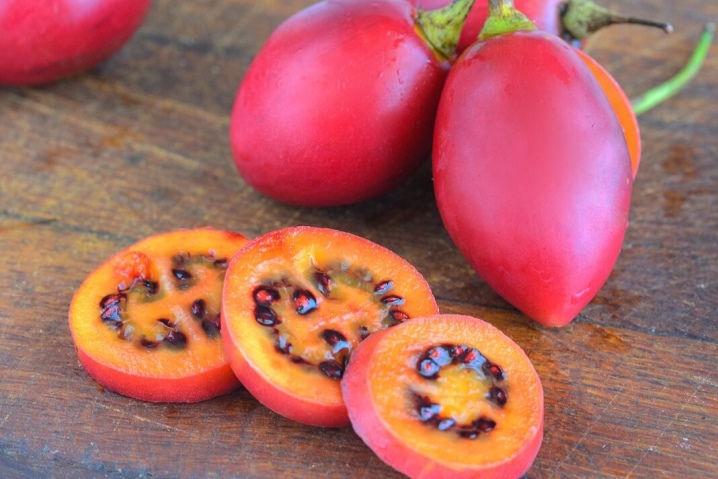
Description
The fruit belongs to the nightshade family like tomato, eggplant and pepper. Therefore, among the people, the plant received other names - tomato tree, also called beetroot cyfomandra or Italian cream. The tree grows to a height of 3 to 6 meters and can live for 15 years.
Tamarillo has very large leaves, looks like an elongated heart. The trunk is covered with brown bark. Despite the apparent strength, under strong gusts of wind, the branches and stem can easily break.
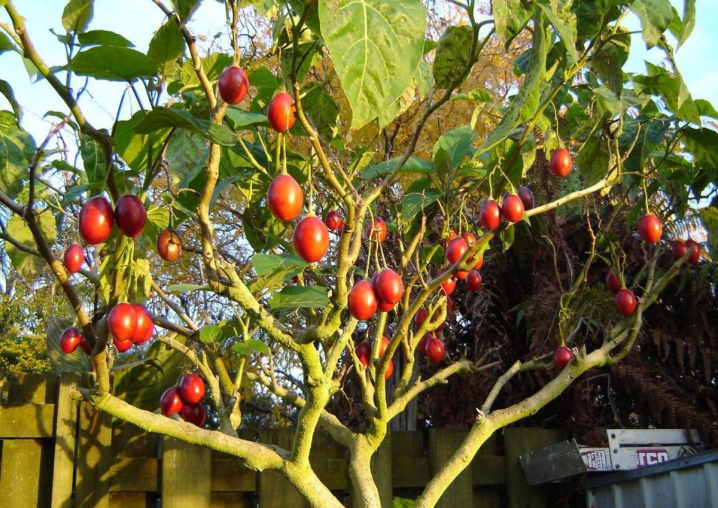
Fruiting occurs in the second year of cultivation. It blooms in spring with very beautiful white-pink inflorescences, collected in a brush. The fruit is similar in appearance to a tomato. One bunch ripens from 3 to 12 pieces. They are ovoid, slightly tapered at the bottom. Their length is no more than 10 cm. The maximum weight of one fruit is 300 grams.
The color of the peel of the fruit of the culture depends on the variety and degree of maturity, more often yellow, red, orange, less often purple. The rind is thin, tender, smooth, but bitter. The flesh is mostly dark orange in color, with many small black seeds that are not felt when eaten.
The harmonious taste combines sour, sweet and salty at the same time, sometimes with a sharp edge. The aftertaste is characterized by a slight sourness, reminiscent of tomato. The purpose of the fruit is universal, depending on the main ingredient in the dish.
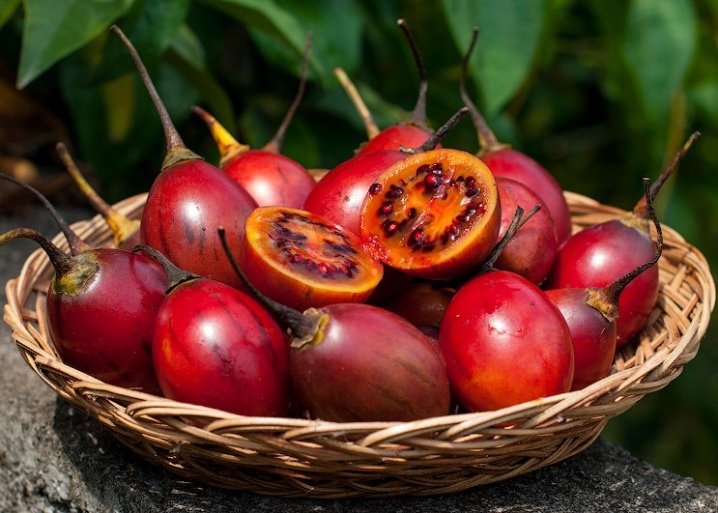
Origin and distribution
The tomato tree is native to the countries of South America and New Zealand.... It is noteworthy that it was New Zealand breeders who in 1967 gave the name to this plant - tamarillo. In this country, the culture is especially popular; a large number of plantations are equipped for its cultivation. Farmers paid attention to the unusual beneficial properties during the Second World War, when the population was in dire need of vitamins and good nutrition in general.
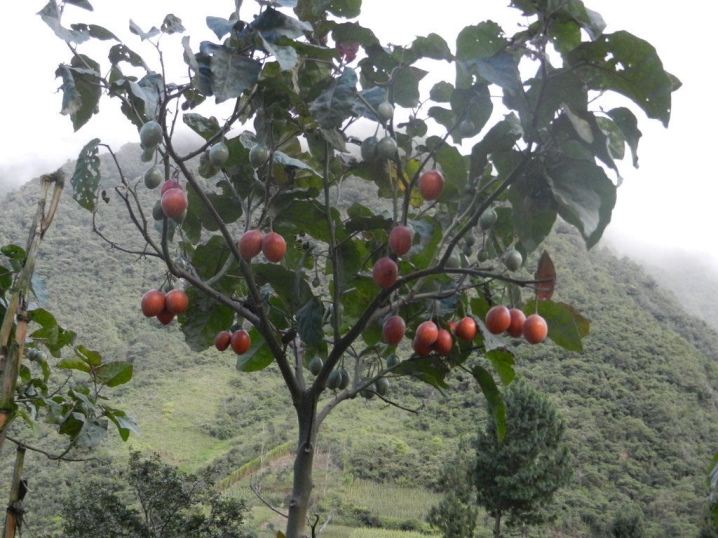
Varieties
Today there are 3 varieties, each of the catorykh has its own unique aroma and taste.
- The most common - Red... The fruits have a pleasant harmonious sweet and sour taste, especially when consumed raw. The rind is dense, tart on the palate, with bitterness. Skin color depends on ripeness. The more ripe, the more intense the red. The pulp is juicy, orange in color with dark red seeds.
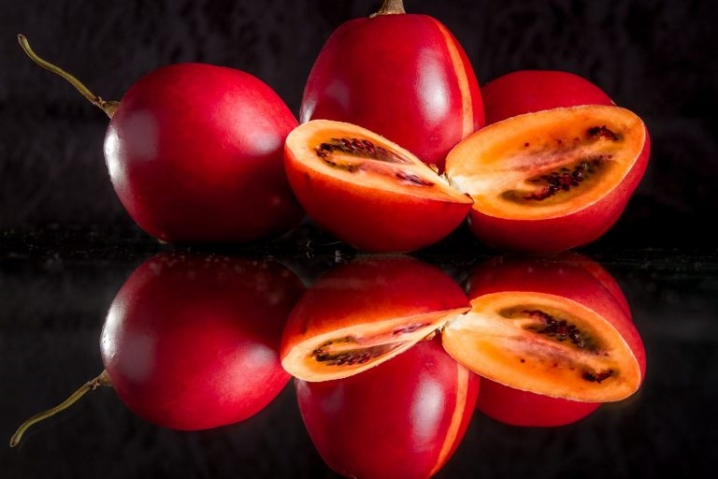
- Yellow the fruits have a peel and pulp of the same tone - yellow. The taste is more inherent sweetness, like sweet salad tomatoes.
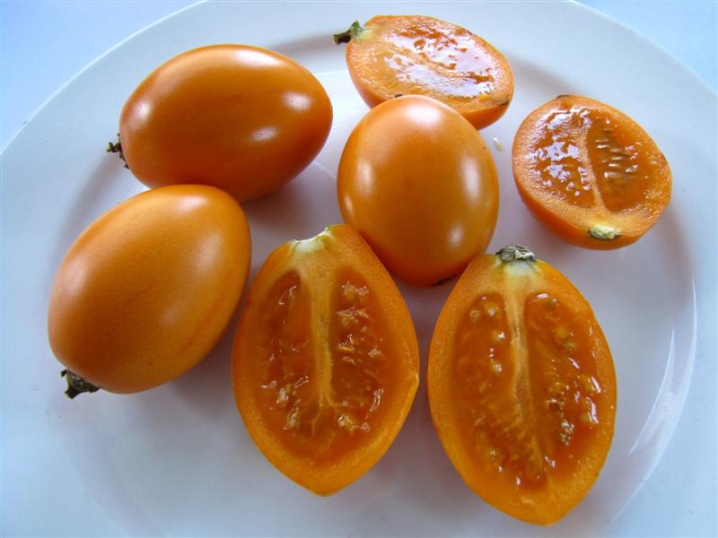
- The largest fruits in orange or golden tamarillo. Their flesh is very juicy and fleshy.

Growing features
To grow a tomato tree in your backyard, the temperature regime and quality of the soil should be taken into account. Beetroot tsifomandra belongs to tropical plants. Therefore, for successful development, it needs warmth and humidity.
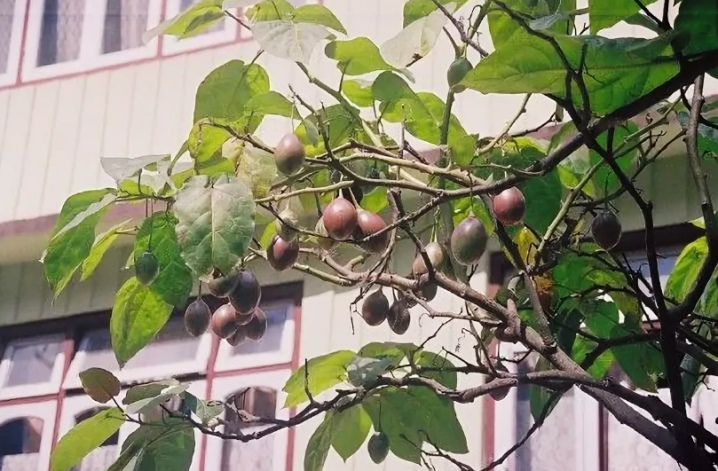
The soil must be fertile and breathable. Light sandy stones are well suited for this. Good drainage is required, since tamarillo does not at all tolerate stagnant water in the roots. This leads not only to the development of fungal infections, but also causes the death of the bush.
Grows best in regions where the temperature in winter does not drop below 10 degrees. Small frosts are detrimental to the culture. Mature trees can recover after a short frost, but young seedlings die immediately.
Due to the fact that the culture has superficial roots, the choice of a planting site should be taken as carefully as possible, since strong winds can pull out the plant from the roots. The bark and branches are also not durable, they break easily with gusts of wind, especially when the tree is loaded with fruits.
A plant obtained by growing through tall seeds, in the first year of development, they must be cut off after the first fruiting to a height of 90-120 cm. This will allow the lateral branches to develop better and get a more compact bush.
It is necessary to prune tamarillo annually after harvesting, since only new shoots form fruits. Old, dry, broken and already fertile branches must be removed. Failure to do this will over-thicken the crown, reducing the amount of fruit.

Important attention should be paid to watering, since the plant is tropical, the soil should be constantly moist, but not overdried and not swampy. In this case, drip irrigation is ideal, maintaining constant soil moisture.
Tamarillo is a perennial plant. Like most fruit trees, it begins to bear fruit in the 2nd year of development. The most productive is 5-6 years old. However, if the culture is properly looked after, then healthy and tasty fruits can be enjoyed up to 12 years of age of the tree.
The tomato tree, like the tomato, is quite resistant to many infectious diseases. But it is especially unstable to the mosaic virus of cucumber and potatoes. Also, snails, slugs and starlings are capable of causing significant harm to him.
For prevention, you can treat the bushes with special preparations before flowering.
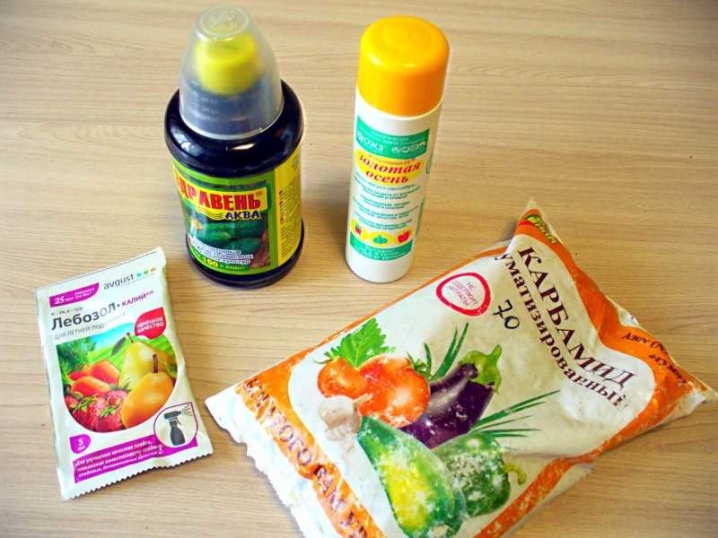
In hot weather, aphids can settle on the crown. You can get rid of it with a regular laundry soap solution. To enhance immunity, the soil is spilled with iodine, which is diluted at the rate of 1 bottle per 10 liters of water.
It is very difficult to find a ready-made seedling.... The best option for reproduction is seeds, less often cuttings. If the seed method is used, the tree grows tall. Can be propagated through cuttings, they are shorter, shrub-like, which allows them to be grown outdoors, even in windy areas.

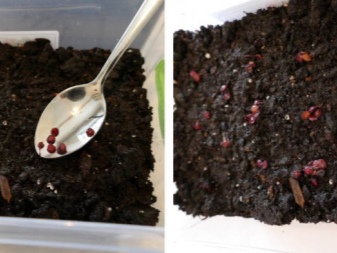
In addition, reproduction through seeds is not always successful, since plants can lose their parental qualities. Here you should not be mistaken with the choice and take planting material from red fruits with dark brown pulp or yellow and yellow ones. Typically, these fruits retain their parental properties.
Before starting the germination of seeds, they are first thoroughly washed, dried in a dark place and placed in the refrigerator for a day to speed up the germination process... After the seeds are planted in a container with fertile soil at a distance of 50-60 cm between rows and 30-40 cm seedlings. The seeds usually germinate at 100%, and the first shoots can be seen in a week. They start picking seedlings when there are 2-3 full-fledged leaves on it.

They start planting seeds in winter, by May it will be possible to get strong seedlings for planting in unprotected soil... They begin to transfer the Italian cream to a permanent place when the ground warms up to + 5 ... 8 degrees. The planting hole is made the size of the root system, adding 15-20 cm. It is imperative to pinch the main root to activate it.
The culture responds positively to regular feeding, especially organic. The compost is applied at the root, and the mullein is diluted in proportions of 1: 10.
In the open field
In the southern regions, the culture is successfully grown on a personal plot. Before planting tamarillo in open ground, the site is prepared in advance. Choose the warmest and most protected place for landing. Better if it is a small hill, the soil will warm up well. Saplings begin to be planted at the end of May.
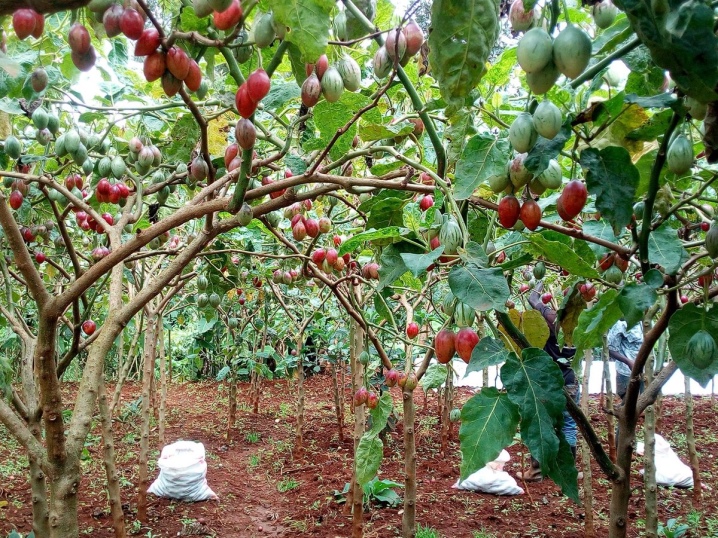
The tree does not tolerate acidic soils, so the place needs to be changed periodically... If this is difficult, then the land around the bush is partially removed, replacing it with a more fertile one, or the area is treated with dolomite flour or lime.
During the autumn digging of the earth, compost must be applied; in the spring, the soil is enriched with rotted manure and a small amount of mineral fertilizers (nitrogen, phosphorus and potassium).
For planting, take only strong seedlings, without signs of disease. The bottom two leaves are removed, this will allow the root system to develop more intensively. The seedling is placed in the hole to the level of the remaining lower leaves, covered with earth, rammed, abundantly watered and mulched.
The timing of pruning should be taken into account. If produced in spring, it will ripen early. If in the fall, then fruiting will be delayed and only for the next season in the greenhouse.
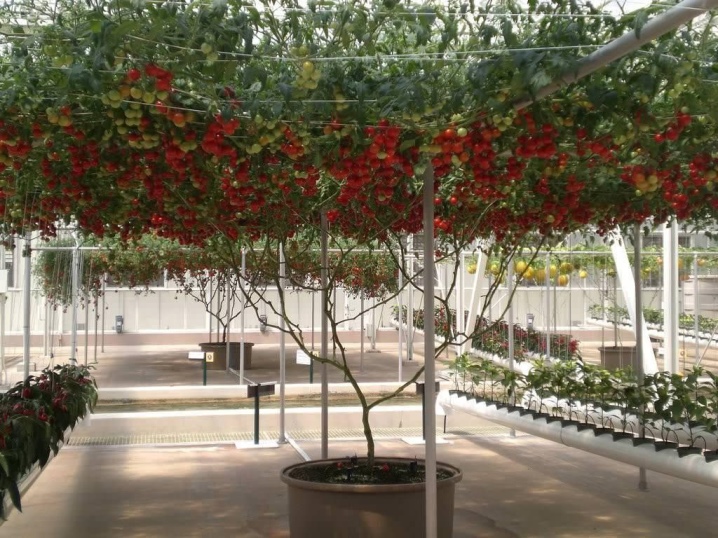
Yields can be increased by removing old and yellowed foliage at the bottom of the trunk... This manipulation improves ventilation, which has a positive effect on the health of the tree. They begin to remove foliage only after the first bunch has fully matured.
It is noteworthy that, despite its whimsicality, today tamarillo has become widely practiced in landscape design. In the Moscow region and the Middle lane, it is most often planted in greenhouses and greenhouses. The culture quickly adapts to new conditions. When the bush is in the loggia in winter, it can be placed in the garden for the summer.
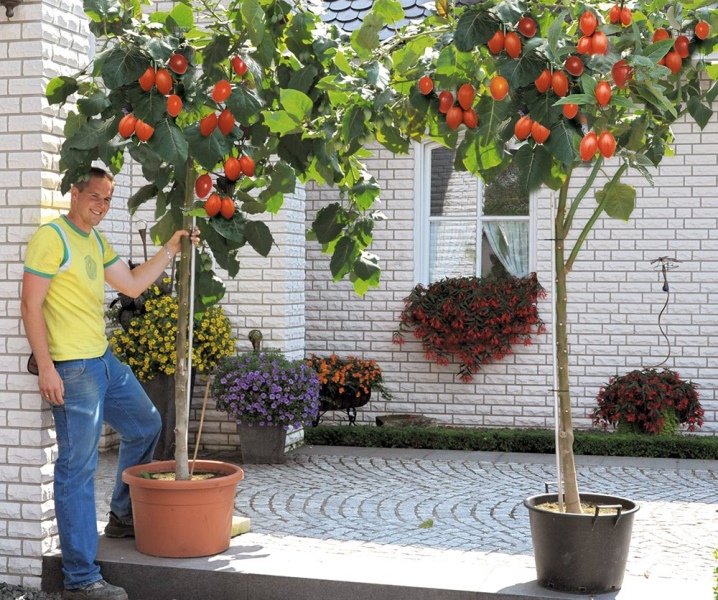
At home
Fans of exotic crops do not need to purchase a personal plot to grow a tomato tree on it. It feels great in a pot at home. In warmer months, it can be placed on the balcony.
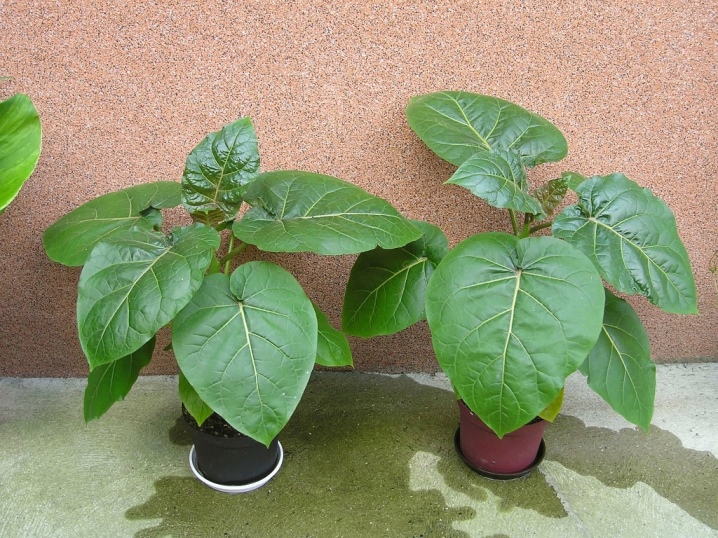
But to grow successfully, tamarillo roots require space, not depth. Therefore, the container must be chosen shallow, but wide. The care is the same as when growing a tree outdoors. The most important thing is to protect it from frost and strong winds.
When growing a cypher at home, it is necessary to create conditions of high humidity, illumination for at least 12-14 hours a day. However, care should be taken to avoid direct exposure to sunlight, which could lead to burns on foliage.... Despite the fact that watering is frequent and abundant, care must be taken that water does not stagnate in the pan of the flower pot, otherwise this will lead to rotting of the roots and the death of the entire tree.
The bush should be carefully irrigated during fruiting. Tamarillo has one feature - the fruits are able to accumulate a large amount of moisture, and an excess of it inside the fruit can lead to their cracking.
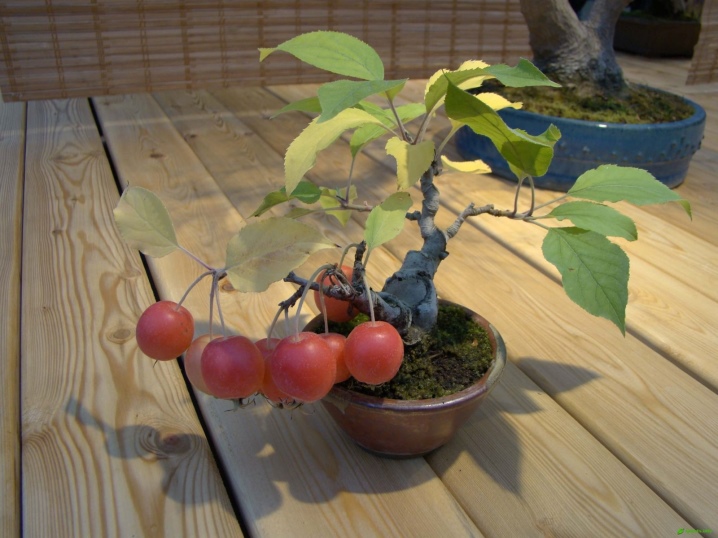
How to harvest and store crops?
They start harvesting the fruits when they are either slightly unripe or fully ripe. Ripening is uneven, so you will need to collect it in several stages. Fruits must be removed from the tree with a stalk of 1 cm, so they will last longer than without it.
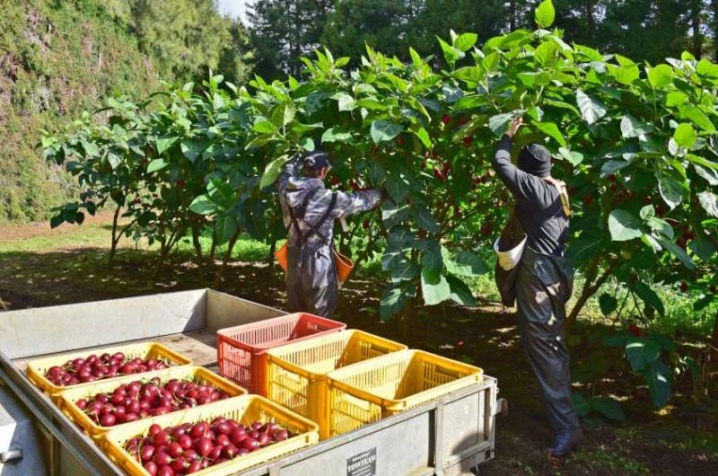
However, not all fruits are suitable for food; their choice must be approached carefully. You need to pay attention to the following indicators.
- The peel should be of a uniform color, without damage. Through dents, bacteria can enter the pulp, accelerating the process of festering of the product.
- Particular attention should be paid to the peduncle... It should be dry and snug against the surface of the fruit. This indicates their full maturity.
- How ripe the fruit can be checked with light pressure, the surface bends a little, and then quickly recovers. If this did not happen and a dent remained on the pulp, this indicates an overripe product that should not be eaten.
- If you can't grow a bush on your own, but you want to eat fruit, then when choosing a product in a store, pay attention to the manufacturer. The tastiest and highest quality tamarillos are supplied from New Zealand.
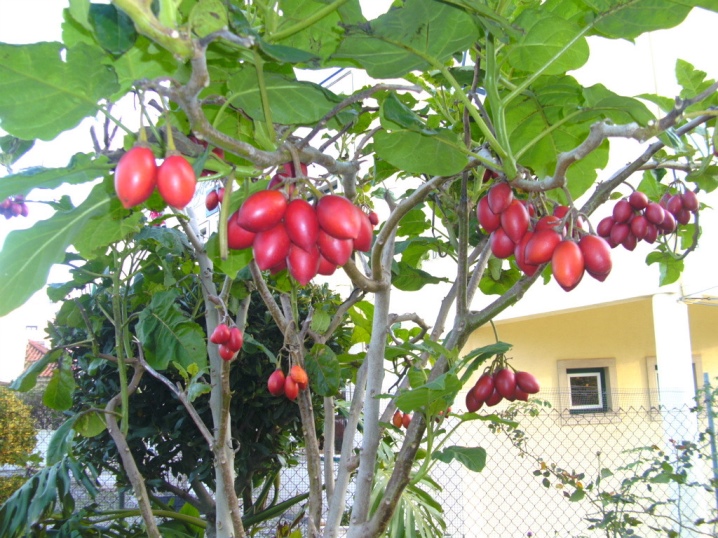
Ripe fruits are stored in the refrigerator for no more than 10 days. If they are not ripe, they are left in a warm, dark place for several days. Fruits can be frozen, they will still retain their beneficial properties. It is only necessary to peel the peel first.
Application
Due to its unusual taste, combining fruit and vegetable notes, the fruit is widely used in cooking. As a rule, the fruits are used as part of dishes. They are added to sauces, salads, desserts, fruits are excellent fillings for pizza, lasagne and unusual additions to meat, soups and ordinary sandwiches.
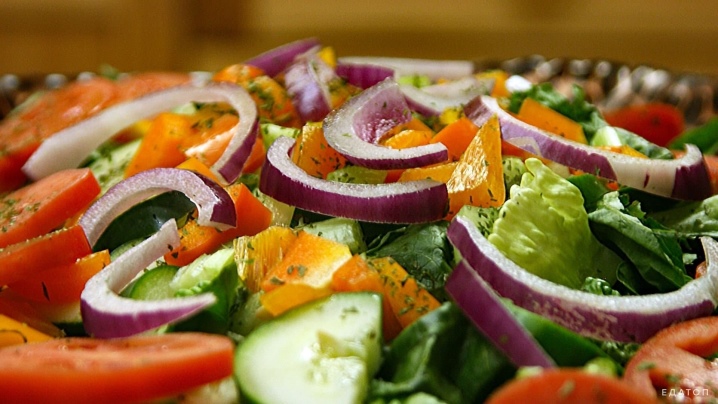
Red varieties are ideal in taste for meat and vegetable dishes, due to the pleasant tomato sourness, but yellow ones will enrich desserts with a harmonious taste, since they are quite sweet.
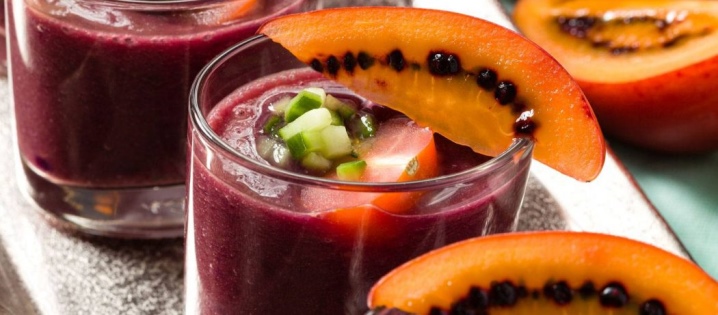
Of course, the fruits can be eaten raw. However, in order to eat them, they must first be properly prepared. The first thing to do is peel off the skin. It is dense and bitter. To remove it, the fruits are blanched by dipping them in boiling water for a few minutes. After that, the peel is removed without difficulty. To eat fresh tamarillo, simply cut it in half and scrape off the flesh, leaving only the rind.
It is noteworthy that the fruits of the tomato tree are rich in useful microelements and vitamins of groups A, B, C, E, PP. In addition, this is a low-calorie product - there are about 50 kcal per 100 grams.... By adding it to your diet, you can get rid of migraines, strengthen the immune system, and the cardiovascular system.
Folic acid in the composition has a beneficial effect on vision, acting as an excellent prevention in eye problems. The fruit is also useful for those who suffer from anemia. Regular consumption makes it possible to compensate for the lack of iron in the body.
Fruits with a dark skin are especially valuable.... They contain an important micronutrient that fights cancer - anthocyanin. It also has antimicrobial and anti-inflammatory properties.

However, a group of people, especially children under 10 years old, should use the product with some caution.... Young children may experience an allergic reaction. And people with diabetes can eat no more than 3 fruits a day. Those who have digestive problems, in particular, during periods of exacerbation of gastritis, can only eat thermally processed tamarillo.
Since the shelf life of Italian plums is very limited, you cannot eat fruits that have been stored for more than two weeks. This can lead to poisoning. Unsuitable for food and those fruits that have an unpleasant odor or damage on the surface of the peel.











The comment was sent successfully.